Backpacking in Arizona is indeed a mind-blowing experience. Arizona is a backpacker’s paradise, with some of the most breathtaking scenery and diverse terrain in the United States.
Backpacking in Arizona offers a chance to explore hidden treasures, from towering peaks to deep canyons and everything in between. You will never forget your experience in Arizona when backpacking there.
Contents
If you’re an adventurous soul seeking a new challenge, backpacking in Arizona is a must-do. Arizona backpacking trips offer a unique way to immerse yourself in the state’s stunning natural beauty.
Backpacking trails Arizona are varied, from easy hikes to challenging multi-day treks. Each trail offers its own rewards, from breathtaking vistas to secluded wilderness areas.
So why not pack your backpack and hit the trails? Let’s explore the exciting world of backpacking in Arizona.
Backpacking Trails in Arizona: A Hiker’s Paradise
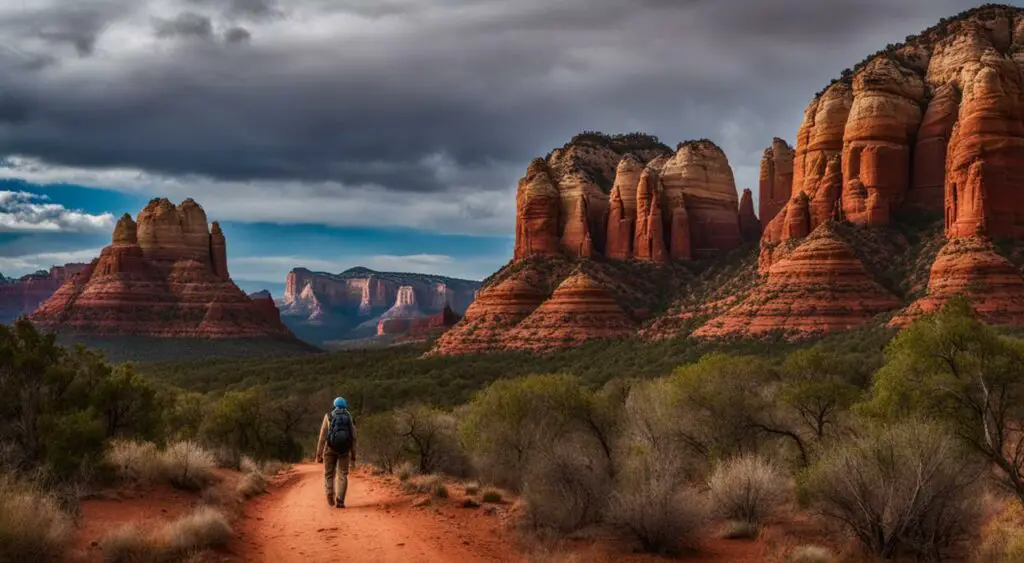
Arizona is a backpacker’s paradise, with its diverse terrain and breathtaking scenery offering endless opportunities for exploration.
From the iconic Grand Canyon to the stunning red rocks of Sedona and the rugged Superstition Wilderness, Arizona’s backpacking trails are truly unrivaled.
Some of the Best Backpacking Trails in Arizona
Arizona boasts an impressive selection of backpacking trails, catering to hikers of all levels of experience and fitness. Some of the most popular hikes in the state include:
- The Bright Angel Trail in Grand Canyon National Park, a classic trail offering stunning views of the Grand Canyon
- The West Fork Trail in Sedona, a picturesque hike through a lush riparian canyon
- The Superstition Ridgeline Trail in the Superstition Wilderness, a challenging hike that rewards hikers with sweeping views of the Sonoran Desert
- The Arizona Trail, a 800-mile trail that traverses the length of the state, offering hikers a true wilderness experience
These are just a few examples of the many backpacking trails that Arizona has to offer. No matter where you choose to hike, you’re sure to be awed by Arizona’s natural beauty and charm.
Planning Your Arizona Backpacking Trip
Before embarking on your backpacking trip in Arizona, it’s important to plan ahead to ensure a safe and enjoyable adventure. Consider the following tips:
- Research your chosen trail and familiarize yourself with the terrain, weather conditions, and potential hazards
- Obtain any necessary permits and make reservations for campsites in advance
- Pack essential gear such as a quality backpack, proper hiking boots, and adequate water and food supplies
- Leave no trace by practicing good wilderness etiquette and minimizing your impact on the environment
By taking the time to plan your backpacking trip in advance, you’ll be able to fully appreciate the wonders of Arizona’s iconic wilderness trails.
“The Grand Canyon is Arizona’s most iconic backpacking destination, but it’s just the tip of the iceberg. From the desolate beauty of the Superstition Wilderness to the towering peaks of the Arizona Trail, there’s no shortage of unforgettable hikes in Arizona.”
Exploring Arizona’s Backcountry: Untamed Wilderness
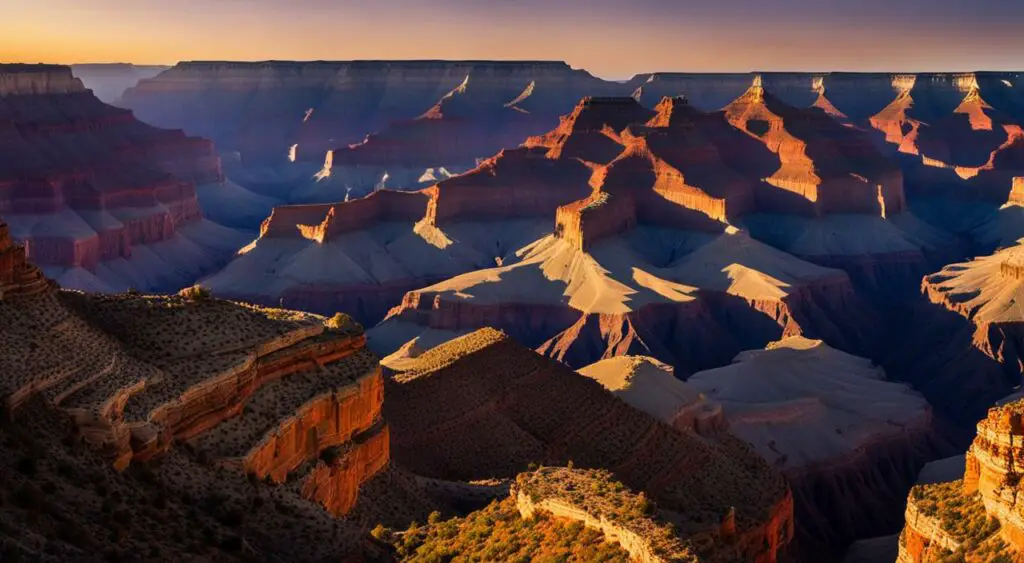
If you’re looking for a true wilderness experience, Arizona’s backcountry is the place to be. With its diverse terrain and breathtaking landscapes, the state is home to some of the most spectacular backpacking destinations in the country.
In this section, we’ll explore some of the must-see highlights of Arizona’s backcountry.
The Grand Canyon: A Natural Wonder
No visit to Arizona’s backcountry is complete without seeing the Grand Canyon. This natural wonder offers some of the most awe-inspiring views you’ll ever see.
Backpacking through the Grand Canyon is a truly unique experience, filled with rugged trails, stunning vistas, and abundant wildlife.
Whether you’re an experienced hiker or a novice adventurer, a hike through the Grand Canyon is a must-do on any Arizona backpacking trip.
Sedona: Red Rocks and Vibrant Hues
If you’re looking for a change of scenery, Sedona provides a dramatic contrast to the rugged terrain of the Grand Canyon.
The red rocks and vibrant hues of Sedona make for a stunning backdrop, and hiking through its desert landscape is a true adventure.
With trails ranging from easy to difficult, Sedona offers something for every level of hiker. Make sure to stop and take in the breathtaking views of this unique and mesmerizing destination.
Superstition Wilderness: Untouched Beauty
The Superstition Wilderness is another hidden gem of Arizona’s backcountry. This rugged landscape offers a chance to experience the untamed beauty of the desert up close and personal.
With its towering mountains, rocky trails, and abundant wildlife, the Superstition Wilderness is a backpacker’s paradise. Whether you’re looking for an adrenaline-pumping hike or a leisurely stroll, this wilderness area has it all.
Arizona’s National Parks: Natural Wonders
Arizona’s backcountry is home to several national parks, each with its own unique beauty and charm.
From the towering peaks of the Grand Canyon to the breathtaking landscapes of Sedona, exploring Arizona’s national parks is a must-do on any backpacking trip.
Make sure to check out the hiking trails at each park, as they offer some of the best opportunities to immerse yourself in the natural wonders of Arizona’s backcountry.
Preserving Arizona’s Wilderness for Future Generations
As we explore Arizona’s backcountry, it’s important to remember the importance of responsible and sustainable wilderness practices.
By following Leave No Trace principles and practicing ethical hiking and backpacking, we can help ensure that these areas are preserved for future generations to enjoy.
Let’s do our part to protect and preserve Arizona’s wilderness areas for years to come.
Essential Gear for Backpacking in Arizona: Preparing for the Journey
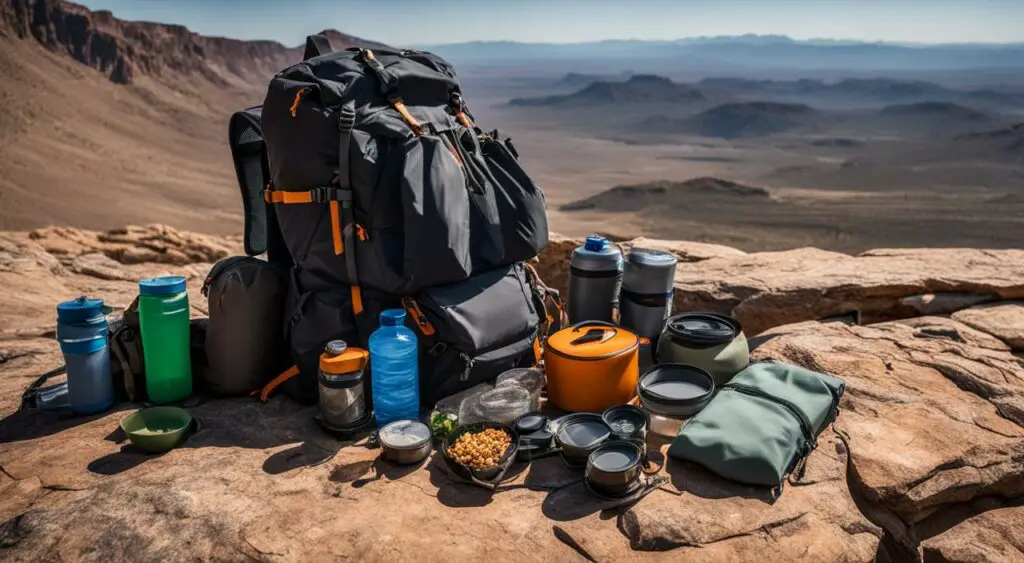
Before embarking on your backpacking adventure in Arizona, it’s important to have the right gear to ensure a safe and comfortable trip. Here are some essential backpacking gear you should consider:
Backpacking Essentials
- A durable and comfortable backpack – choose a backpack that fits your torso and can hold all your gear.
- Tent and sleeping bag – Arizona’s desert terrain can get cold at night, so make sure to choose a tent and a sleeping bag that can keep you warm.
- Hiking boots – sturdy and comfortable hiking boots are crucial for traversing Arizona’s rugged terrain.
- Water bottles and water filtration system – water sources may be scarce, so it’s important to carry enough water and a filtration system to purify water found in the wilderness.
- Map and compass – GPS devices may not work in remote areas, so always carry a map and compass, and know how to use them.
Camping in Arizona
When camping in Arizona’s wilderness, it’s important to follow Leave No Trace principles and respect the environment.
Always camp in designated campsites whenever possible, and if wild camping, choose a spot at least 200 feet away from water sources and trails.
Keep your campsite clean and always pack out your trash. Additionally, check for fire restrictions before starting a campfire and always put out fires completely before leaving.
Wild Camping in Arizona
If you plan on wild camping in Arizona, it’s important to follow regulations and obtain the necessary permits. Arizona has a variety of wilderness areas, and each has its own set of rules and permit requirements.
Research the specific regulations of the area you plan to visit and obtain the necessary permits ahead of time.
The beauty of the desert landscape comes at a price – being completely self-reliant and prepared for any situation is the ultimate key to a successful backpacking trip in Arizona.
Planning Your Arizona Backpacking Trip: Tips and Tricks
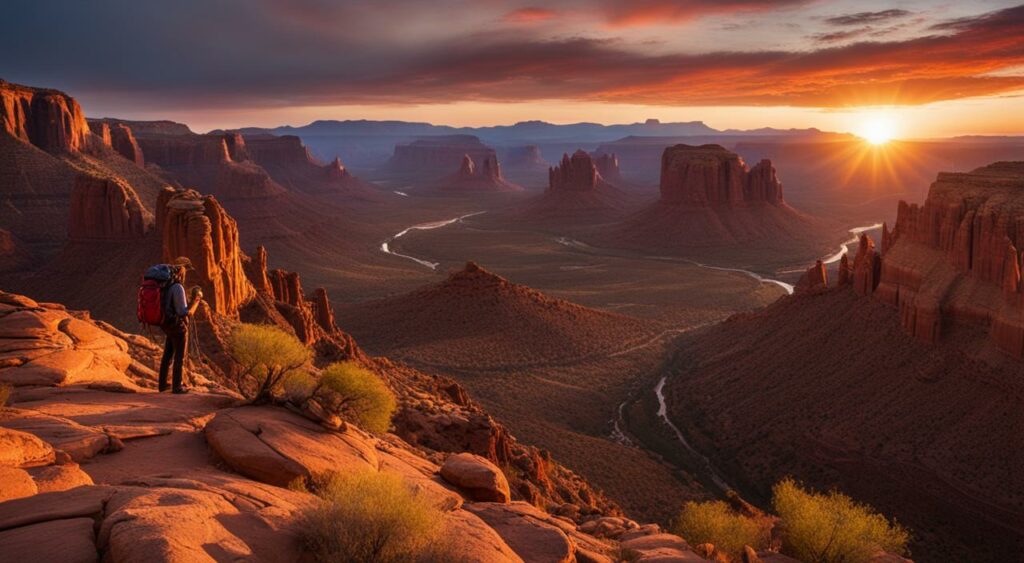
If you’re planning a backpacking trip in Arizona, there are a few things you need to know before hitting the trails.
With so many options for backpacking routes and campsites, it can be overwhelming to plan your adventure. Here are some backpacking tips for Arizona to help you make the most of your trip:
Backpacking Permits in Arizona
Before setting out on your backpacking trip, you’ll need to obtain a permit. Arizona has a variety of permits available, depending on the area you plan to visit and the duration of your trip.
Some permits are available online, while others must be obtained in person.
If you plan to backpack in a national park, you will need to obtain a backcountry permit. These permits are limited in number and often require advanced reservations.
Make sure to research the rules and regulations for the specific area you plan to backpack in, as some permits are location-specific.
Choosing the Best Time to Visit
Arizona’s climate can be harsh, with hot temperatures and limited water sources. It’s important to plan your trip during the right season to avoid extreme conditions.
Spring and fall are the best times to go backpacking in Arizona, with cooler temperatures and more reliable water sources.
Summer should be avoided, as temperatures can soar above 100 degrees Fahrenheit.
Essential Backpacking Gear
When backpacking in Arizona, it’s important to have the right gear for your trip. Make sure to bring plenty of water and electrolyte replacement drinks, as dehydration is a common issue in the desert heat.
Lightweight clothing that provides sun protection is also essential, as well as a good pair of hiking boots. Other essential backpacking gear includes a reliable tent, sleeping bag, and backpack.
Make sure to bring a map and compass or GPS device, as some trails in the backcountry may not be well-marked. A first aid kit and emergency signaling device are also important for safety.
Backpacking Tips for Arizona
To make the most of your Arizona backpacking trip, here are some additional tips to keep in mind:
- Stay on designated trails to protect the fragile desert ecosystem
- Carry out all trash and waste to avoid littering and protect wildlife
- Respect wildlife and keep a safe distance
- Learn basic desert survival skills, such as finding water and shelter
- Check the weather forecast before setting out on your trip
By following these backpacking tips for Arizona and planning your trip carefully, you can have a safe and rewarding backpacking adventure in the beautiful desert landscape.
Experiencing Arizona’s National Parks: Nature’s Masterpieces
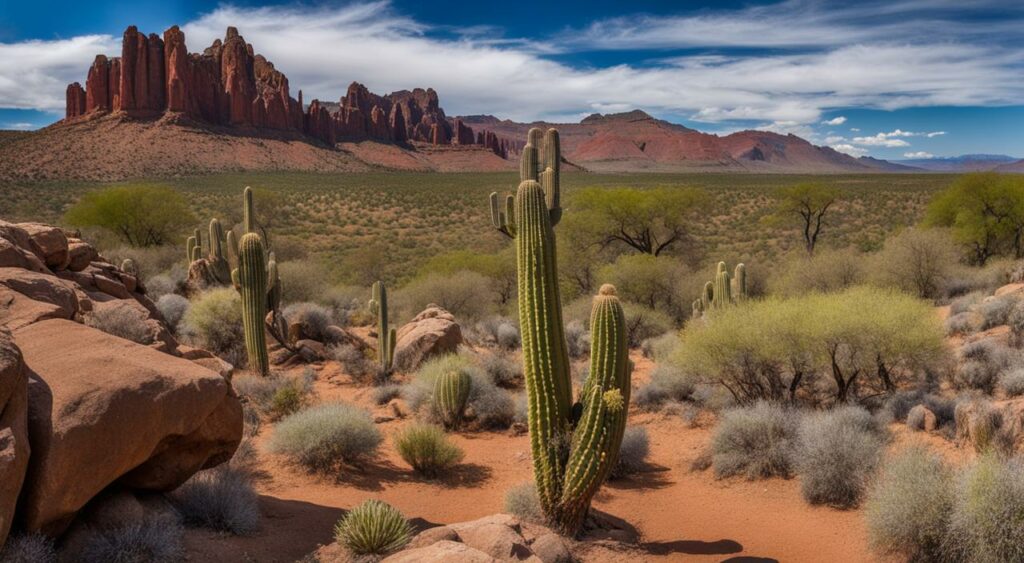
Arizona is home to some of the most breathtaking national parks in the United States, offering a wealth of outdoor adventures for backpackers.
Whether you’re exploring the Grand Canyon’s rugged terrain, hiking through the stunning beauty of Sedona, or discovering the secrets of the Superstition Wilderness, Arizona’s national parks are sure to leave you awe-inspired.
One of the top hiking trails within Arizona’s national parks is the Bright Angel Trail, a challenging 19-mile round trip hike that takes you into the heart of the Grand Canyon.
The trail features stunning views of the canyon and the Colorado River below, but hikers must be prepared for steep switchbacks and extreme temperatures.
The Zion National Park, located on the border of Arizona and Utah, is another must-visit for backpackers.
The park features towering sandstone cliffs, deep canyons, and a vast array of wildlife, including bighorn sheep and mule deer.
The Angels Landing hike, a 5.4-mile round trip trail with a steep climb and a narrow ridge to the summit, offers unparalleled views of the park and is a must-do for adventurous backpackers.
For those seeking a more serene experience, the Petrified Forest National Park in northeastern Arizona provides a unique opportunity to explore ancient petrified wood and vibrant, colorful badlands.
The park offers several hiking trails, ranging from easy to challenging, and showcases a stunning array of geological formations.
Top Hiking Trails in Arizona’s National Parks
Here are some of the top hiking trails within Arizona’s national parks:
- Bright Angel Trail – Grand Canyon National Park
- Angels Landing – Zion National Park
- South Kaibab Trail – Grand Canyon National Park
- The Narrows – Zion National Park
- Red Rock Secret Mountain Wilderness Trail – Sedona
- Chiricahua National Monument Hiking Trails
As you plan your Arizona backpacking trip, be sure to include a visit to one or more of these magnificent national parks. With their stunning natural beauty and endless outdoor adventures, they are sure to provide the experience of a lifetime.
Backpacking Trails In Arizona
Outdoor Adventure in Arizona is a dream come true for nature enthusiasts. With its diverse landscapes and stunning scenery, this southwestern state offers a plethora of exciting backpacking trails for outdoor enthusiasts to explore.
From the iconic Grand Canyon to the rugged Sonoran Desert, Arizona is a paradise for backpackers seeking thrilling hiking expeditions and wilderness exploration.
Arizona Backpacking Trails are renowned for their beauty and variety. One of the most iconic destinations is the Grand Canyon, which offers several backpacking routes that cater to all skill levels.
Hiking through this magnificent natural wonder is an experience like no other, with breathtaking views at every turn.
Whether you choose the popular Bright Angel Trail or the challenging South Kaibab Trail, you are guaranteed to be awe-inspired by the grandeur of the canyon.
If you’re looking for a unique wilderness experience, exploring the Sonoran Desert is a must. The desert’s rugged terrain and stunning landscapes provide ample opportunities for backpacking and wilderness exploration.
From cactus-filled valleys to towering mountains, the Sonoran Desert offers an adventurous escape into the heart of nature.
For those seeking a more remote and off-the-beaten-path adventure, consider backpacking in lesser-known areas like the Superstition Wilderness or the Havasu Falls.
These destinations offer unparalleled natural beauty and a chance to experience the tranquility of Arizona’s hidden gems.
When it comes to the best backpacking routes in Arizona, the options are endless. Some popular trails include the Arizona Trail, a challenging and rewarding 800-mile journey that showcases the state’s diverse landscapes.
Other notable routes include the West Fork Trail in picturesque Sedona and the Escalante Route in the Grand Canyon, which takes hikers deep into the heart of this natural wonder.
No matter which backpacking trail you choose in Arizona, always remember to be prepared. Carry essential gear such as a sturdy backpack, proper hiking boots, and ample water and food supplies.
Respect the environment by practicing Leave No Trace principles and research any necessary permits or regulations for the specific areas you plan to explore.
Embarking on a backpacking adventure in Arizona is the perfect way to immerse yourself in the state’s breathtaking natural beauty and experience the thrill of outdoor exploration.
Whether you’re a seasoned backpacker or a beginner looking for a new challenge, Arizona’s backpacking trails are sure to fulfill your thirst for adventure and create memories that will last a lifetime.
Arizona’s Hidden Hikes: Off the Beaten Path
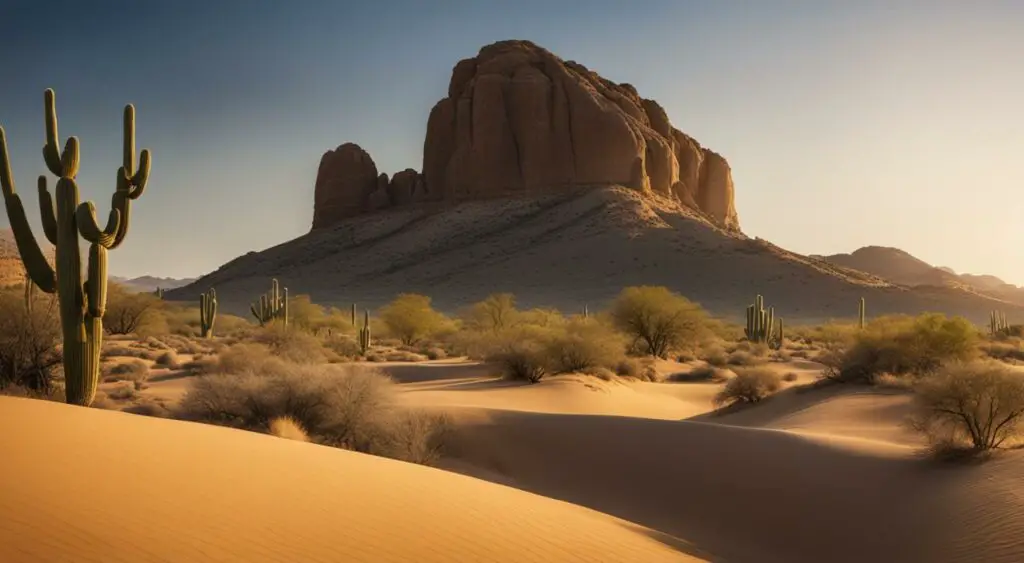
For adventurous backpackers, exploring Arizona’s backcountry is the ultimate thrill.
With a plethora of trails to choose from, it’s easy to overlook the hidden hikes that offer a unique and unforgettable experience.
Whether you’re seeking solitude, breathtaking views, or a chance to connect with nature, Arizona’s hidden hikes deliver.
From the rugged terrain of the Superstition Wilderness to the calm waters of the Havasu Falls, these hidden gems will take you off the beaten path and into the heart of Arizona’s wilderness.
“The clearest way into the universe is through a forest wilderness.” – John Muir
One of the best-kept secrets of Arizona’s backcountry is the West Clear Creek Wilderness.
Located just outside of Sedona, this hidden gem is known for its crystal-clear waters, towering cliffs, and lush foliage.
The hike can be challenging, with steep inclines and rocky terrain, but the payoff is well worth it. Another must-visit destination is the Escalante Route in the Grand Canyon National Park.
While not entirely a secret, this strenuous hike is often overlooked in favor of more popular trails.
The Escalante Route follows a primitive path through the heart of the canyon, offering unparalleled views and a true wilderness experience.
| Trail Name | Difficulty Level | Distance (Roundtrip) |
|---|---|---|
| West Clear Creek Wilderness | Moderate to Difficult | 12 miles |
| Escalante Route | Strenuous | 34 miles |
Before embarking on any hike in Arizona’s backcountry, it’s important to be prepared with the right gear and essentials.
A reliable backpack, sturdy hiking boots, and plenty of water are just a few of the Arizona backpacking essentials that you’ll need for a safe and successful trip.
Exploring Arizona’s hidden hikes is a chance to step off the beaten path and experience the state’s vast wilderness like never before.
Grab your gear and hit the trail to discover the beauty and serenity that awaits you.
Unforgettable Backpacking Destinations in Arizona
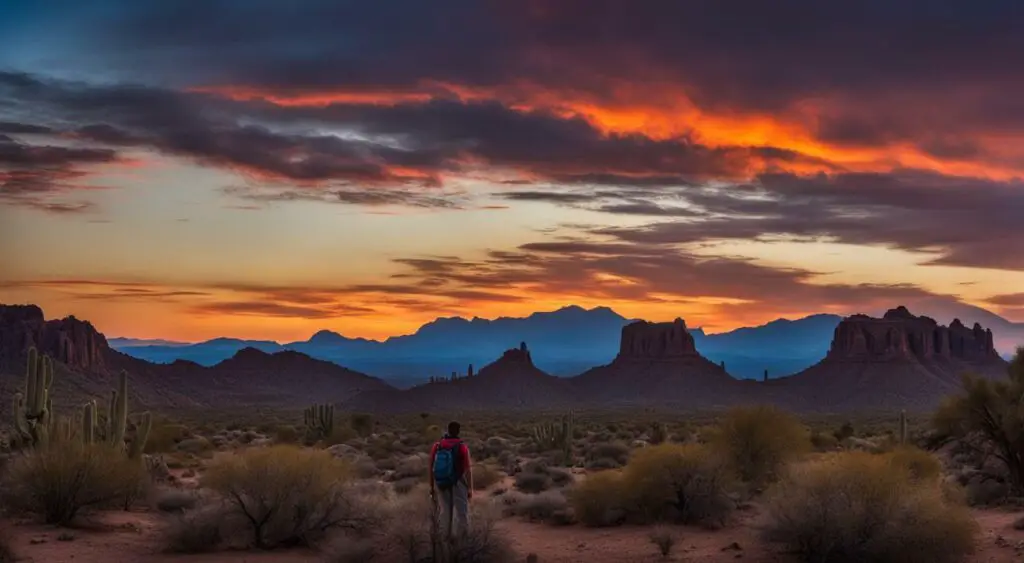
Arizona is a backpacker’s paradise with an abundance of breathtaking destinations to explore. Here are some of the best backpacking spots in Arizona that will make your next adventure an unforgettable one:
| Destination | Distance (round trip) | Difficulty | Highlights |
|---|---|---|---|
| Arizona Trail | 800 miles | Challenging | Experience diverse landscapes, from mountains to canyons, and pass through several national parks. |
| Grand Canyon National Park | 10-20 miles (depending on the trail) | Challenging | Hike through one of the world’s natural wonders and witness breathtaking views at every turn. |
| Havasu Falls | 20 miles | Moderate | Discover the beauty of the iconic turquoise waterfalls and crystal-clear pools. |
| The Wave | 5.2 miles | Moderate | Explore the surreal sandstone formations and twisted rock layers of this iconic destination. |
Embark on an Arizona backpacking adventure and discover the beauty of these unforgettable destinations.
From challenging hikes to moderate treks, there’s something for everyone. Don’t forget to pack your camera and capture the stunning vistas that await you.
As always, make sure to practice Leave No Trace principles and respect the wilderness areas that you visit.
With proper preparation and planning, your Arizona backpacking trip is sure to be a once-in-a-lifetime experience.
Safety and Wilderness Etiquette: Enjoying Arizona Responsibly
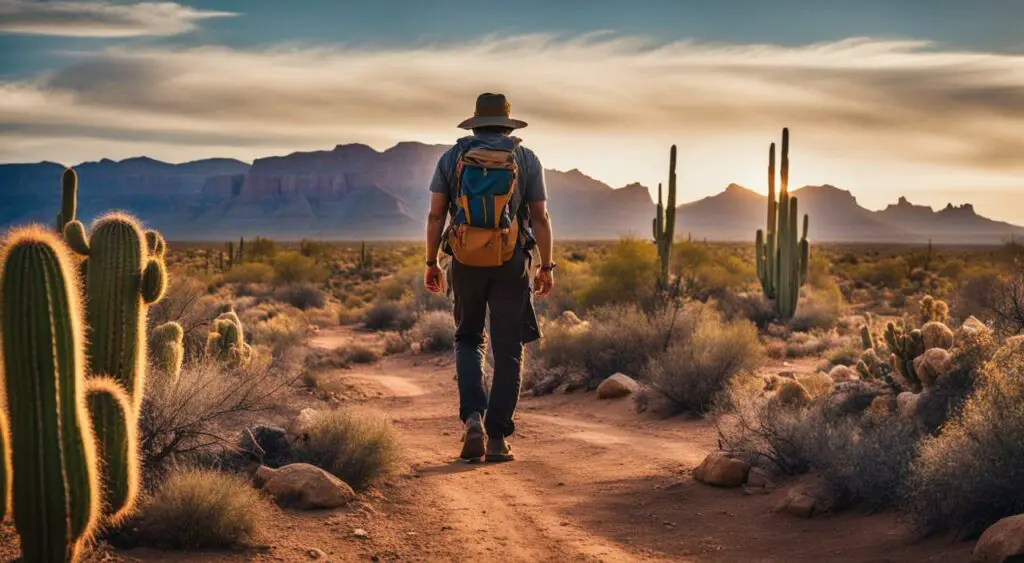
When it comes to backpacking and hiking in Arizona, safety should always be a top priority. To ensure a safe and enjoyable experience, I recommend following these essential safety tips:
- Carry a first aid kit and know how to use it
- Bring enough water and food for your trip
- Wear appropriate clothing and footwear for the terrain and weather
- Carry a map and compass, and know how to use them
- Be aware of the wildlife in the area, and keep a safe distance
- Let someone know your itinerary and expected return time
- Stay on designated trails and avoid disturbing the natural environment
It’s also important to practice wilderness etiquette when backpacking in Arizona. Remember to:
- Leave no trace of your visit, including trash and waste
- Respect wildlife by observing at a distance and not feeding them
- Be considerate of other hikers and backpackers
- Follow all trail rules and regulations
By following these guidelines, we can all do our part in preserving Arizona’s wilderness areas for future generations to enjoy.
Hiking and Backpacking in Arizona
Arizona’s diverse terrain provides ample opportunities for hiking and backpacking, but it’s important to keep safety in mind.
Before setting off on a hike or backpacking trip, research the trail and be aware of any potential hazards, such as steep drop-offs or flash flooding.
It’s also important to check weather conditions and bring appropriate gear. When backpacking, it’s important to plan ahead and be prepared for anything.
Carrying extra food, water, and clothing can make all the difference in an emergency situation. It’s also important to obtain any necessary permits for your trip and let someone know your itinerary.
Arizona Wilderness Areas
Arizona has several designated wilderness areas, including the Superstition Wilderness and Paria Canyon-Vermilion Cliffs Wilderness.
These areas offer a chance to experience the natural beauty of the state while preserving the environment for future generations.
Visitors should be aware of any specific regulations for these areas, such as restrictions on campfires or group size.
Remember to always practice Leave No Trace principles and respect the natural environment when visiting Arizona’s wilderness areas.
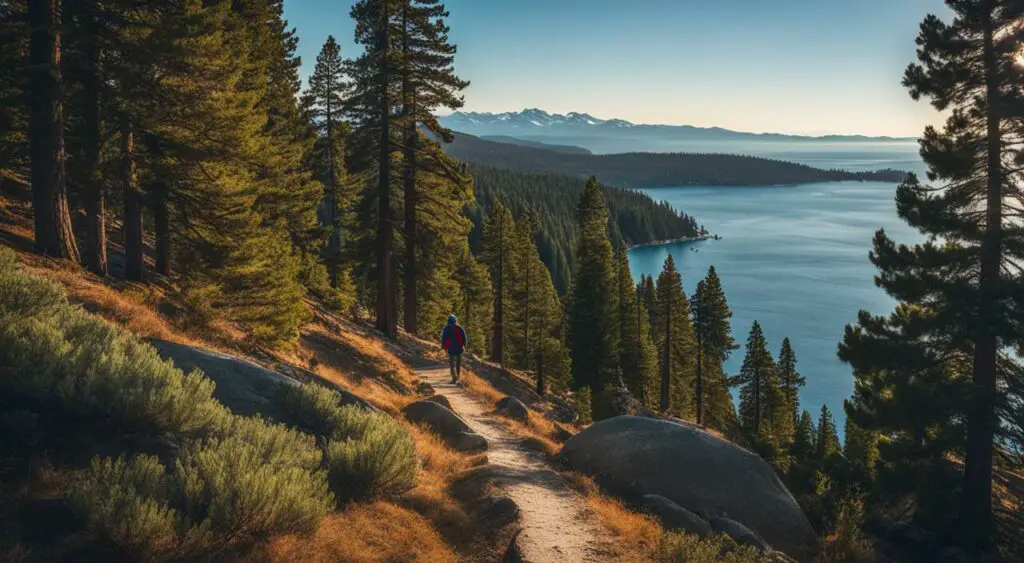
Conclusion
As I wrap up this article on backpacking in Arizona, I hope that I have given you a glimpse into the adventure and beauty that awaits in this southwestern gem of the United States.
From the breathtaking Grand Canyon to the red rock formations of Sedona, Arizona’s diverse terrain offers a multitude of backpacking trails, each with its unique challenges and rewards.
Explore Arizona’s Hidden Treasures
Whether you’re a seasoned backpacker or a novice adventurer, Arizona’s National Parks, hidden hikes, and off-the-beaten-path destinations are sure to captivate and amaze you.
Plan Ahead and Stay Safe
Remember, proper planning is crucial for a safe and successful backpacking trip in Arizona. Be sure to obtain necessary permits, pack essential gear, and familiarize yourself with wilderness etiquette.
Leave No Trace
Finally, let’s all play a part in preserving Arizona’s natural beauty and wildlife by practicing “Leave No Trace” principles. That way, future generations can enjoy the same breathtaking experiences that we have had.
So, what are you waiting for? Grab your backpack, lace up your boots, and get ready to discover the hidden treasures of Arizona’s desert terrain.

FAQ
-
What is backpacking?
Backpacking is a form of travel where individuals carry their belongings in a backpack and explore various destinations on foot, often venturing into remote or wilderness areas.
-
Why should I go backpacking in Arizona?
Arizona offers stunning desert landscapes, unique geological formations, and a wide range of backpacking trails. It’s a perfect destination for outdoor enthusiasts seeking adventure and natural beauty.
-
What are some popular backpacking trails in Arizona?
Some popular backpacking trails in Arizona include the Bright Angel Trail in the Grand Canyon, the West Fork Trail in Sedona, and the Superstition Wilderness trails near Phoenix.
-
What gear do I need for backpacking in Arizona?
Essential gear for backpacking in Arizona includes a reliable backpack, a comfortable and durable tent, proper hiking boots, layered clothing for varying temperatures, a water filter or purification system, and a lightweight stove for cooking.
-
Do I need a permit to go backpacking in Arizona?
Some areas in Arizona, such as certain sections of the Grand Canyon, require a permit for backpacking. It’s important to check with the respective land management agencies or park websites to obtain the necessary permits.
-
When is the best time to go backpacking in Arizona?
The best time to go backpacking in Arizona is typically during the spring (March to May) and fall (September to November) when the temperatures are milder. Summers can be extremely hot, so it’s essential to plan accordingly and carry sufficient water.
-
What are some hidden hikes in Arizona?
Arizona is home to many hidden hikes that offer a more secluded and off-the-beaten-path experience. Some examples include the Bull Basin Trail near Payson and the Ramsay Canyon in the Huachuca Mountains.
-
Are there any safety tips for backpacking in Arizona?
Yes, safety is crucial when backpacking in Arizona. It’s important to stay hydrated, carry a map and navigation tools, inform someone of your itinerary, and be aware of wildlife and potential hazards. It’s also advisable to check weather conditions before heading out.
-
Can I backpack in Arizona’s national parks?
Yes, backpacking is allowed in certain designated areas within Arizona’s national parks. However, it’s important to check with the specific park’s regulations and obtain any necessary permits.
-
How can I practice responsible wilderness etiquette in Arizona?
Practicing responsible wilderness etiquette includes leaving no trace, disposing of waste properly, respecting wildlife and their habitats, and following any local or park-specific guidelines for minimizing impact on the environment.

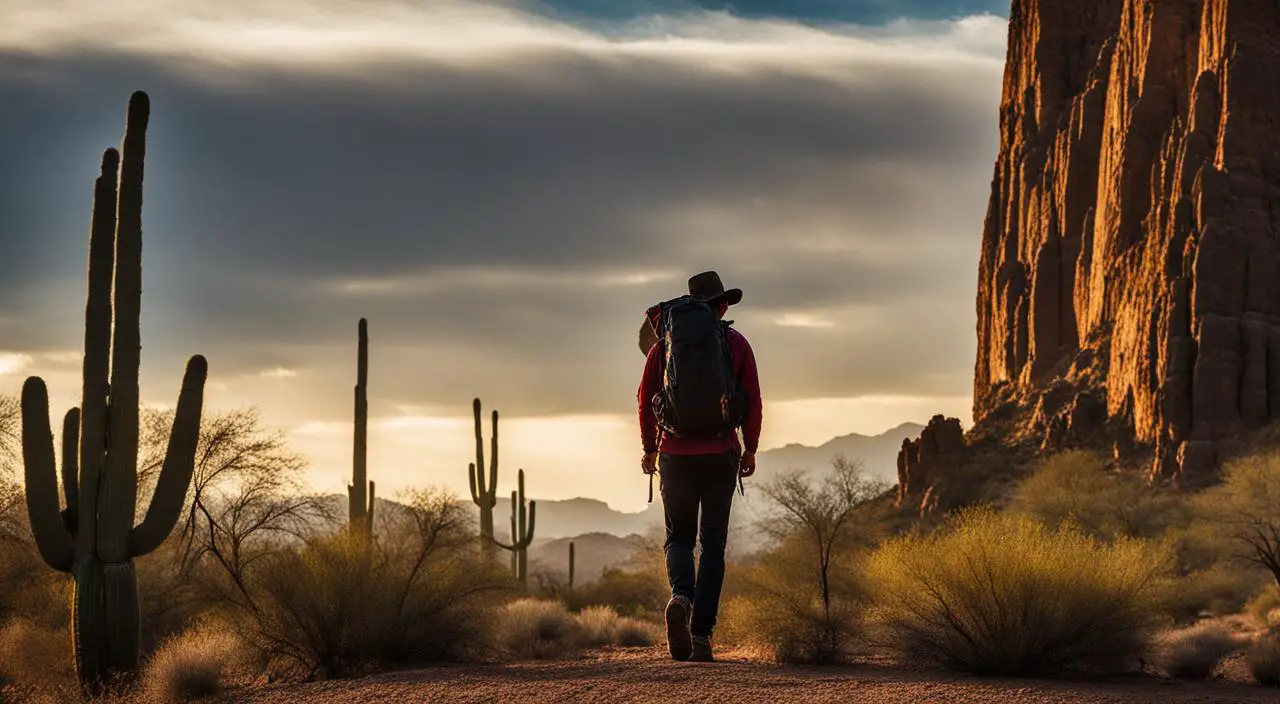


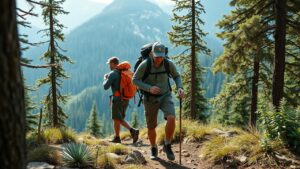
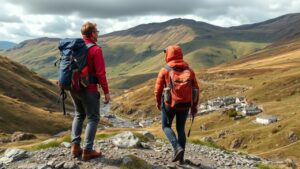
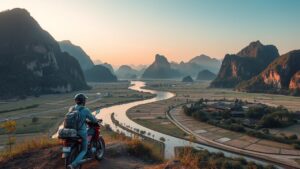
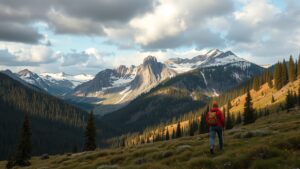

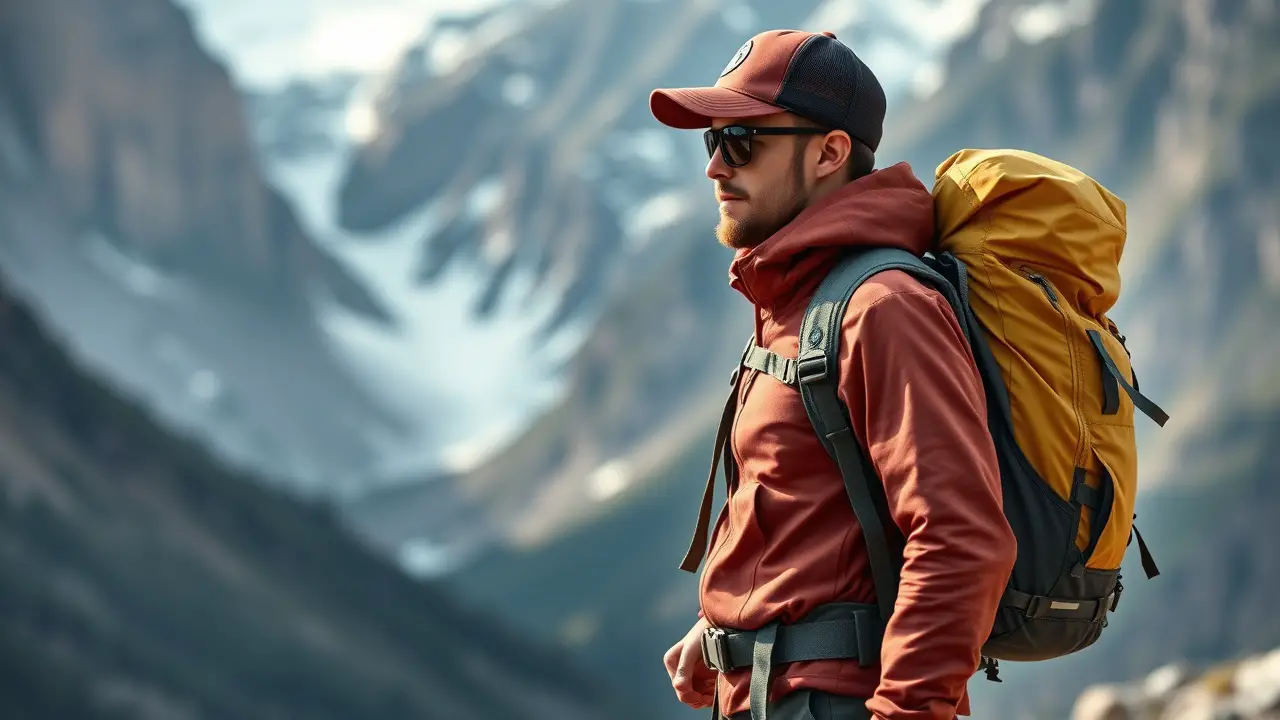
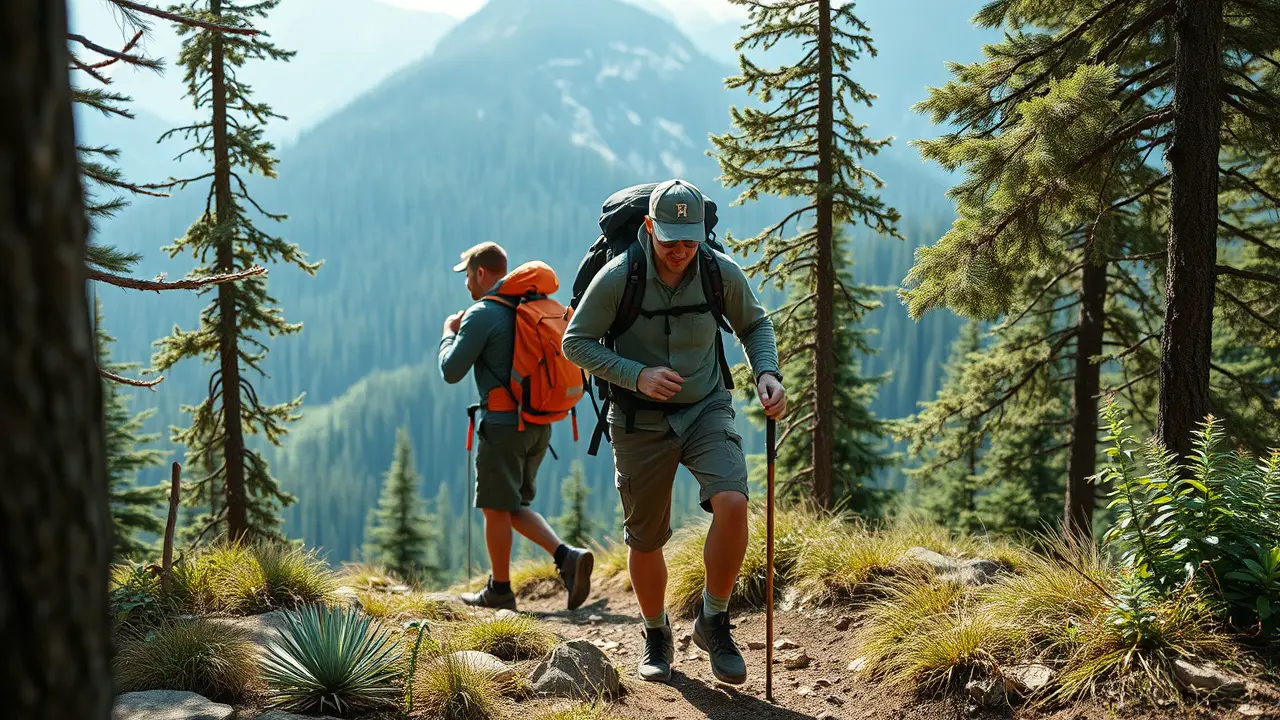
Leave a Reply